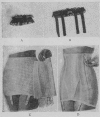Abstract
The prevalence of varicose veins was studied in 504 women cotton workers in England and 467 in Egypt, by a standardized questionary and a specially developed method of examination. The English mill population showed a much higher prevalence of varicose veins than the Egyptian, probably owing to environmental rather than ethnic reasons.
Among the European women the prevalence of varicose veins was significantly related to age, parity, body weight, type of corsetry, and occupation—that is, whether or not they stood at their work. After standardizing for the other variables there was a statistically significant excess of varicose veins in women wearing corsets and roll-ons compared with those wearing less-constrictive garments. After a similar standardization a significant excess was found in women who stood at their work compared with those whose jobs entailed walking or sitting.
Full text
PDF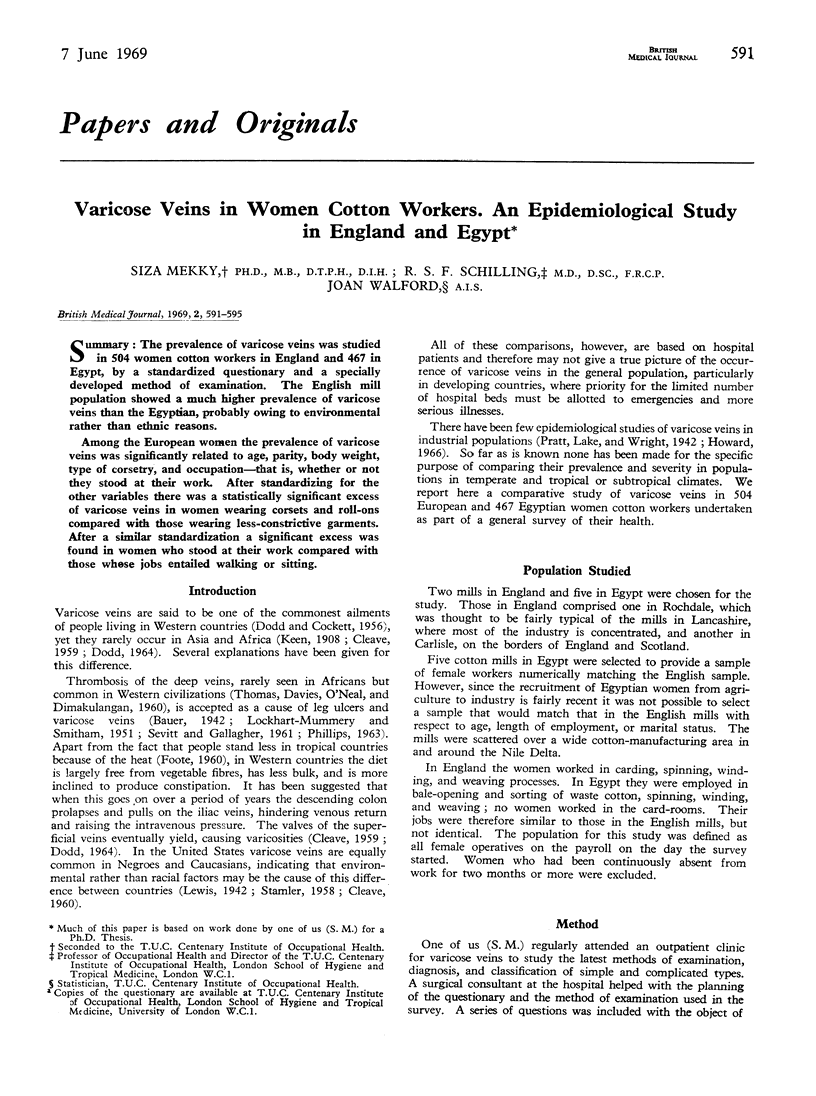
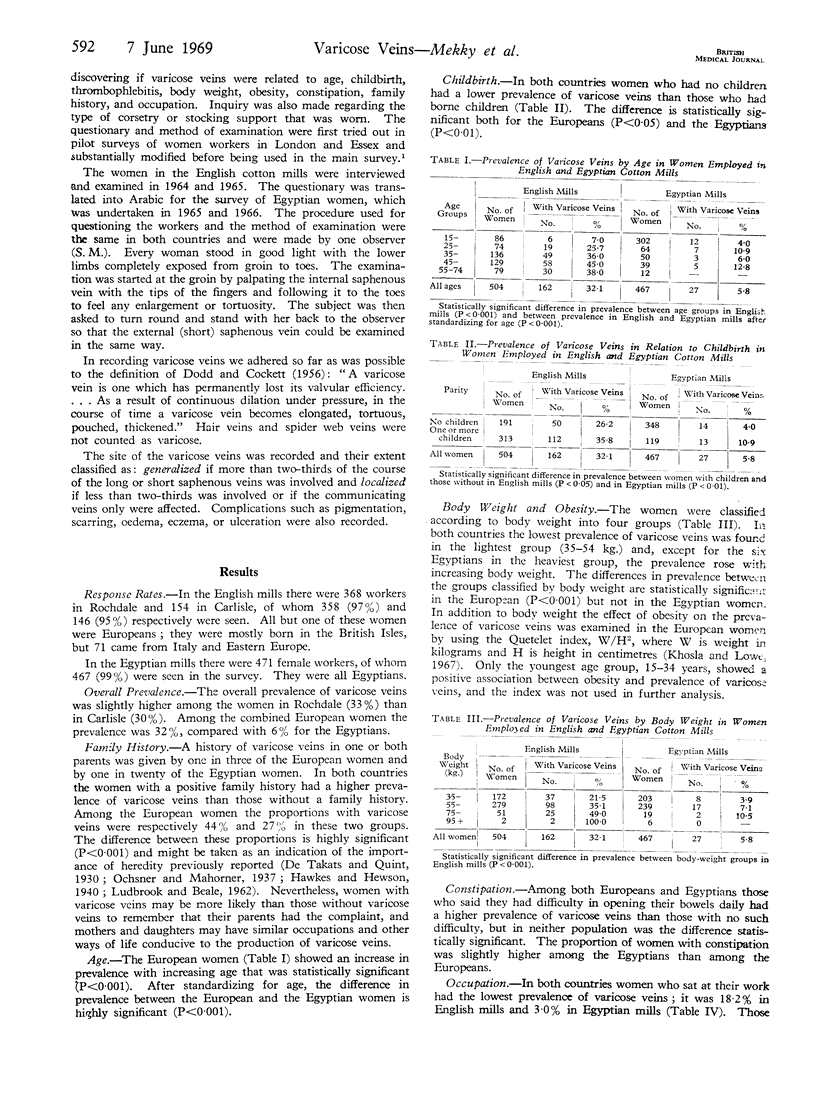
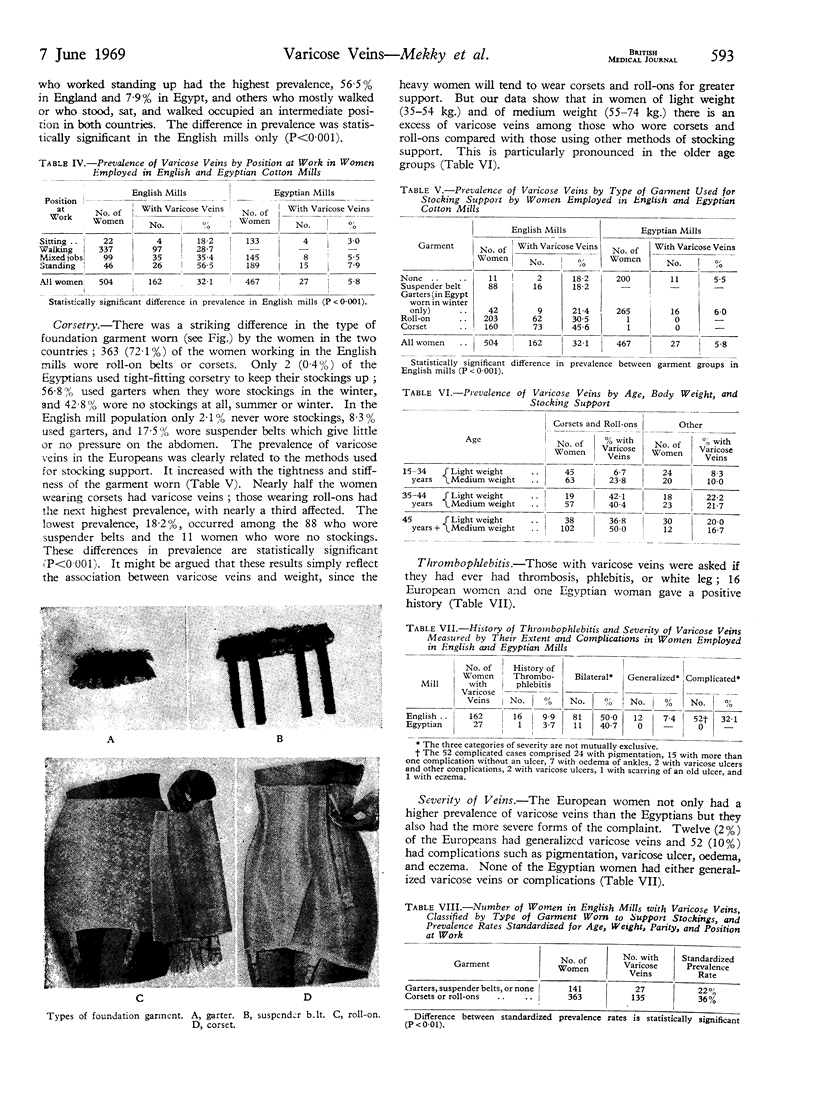
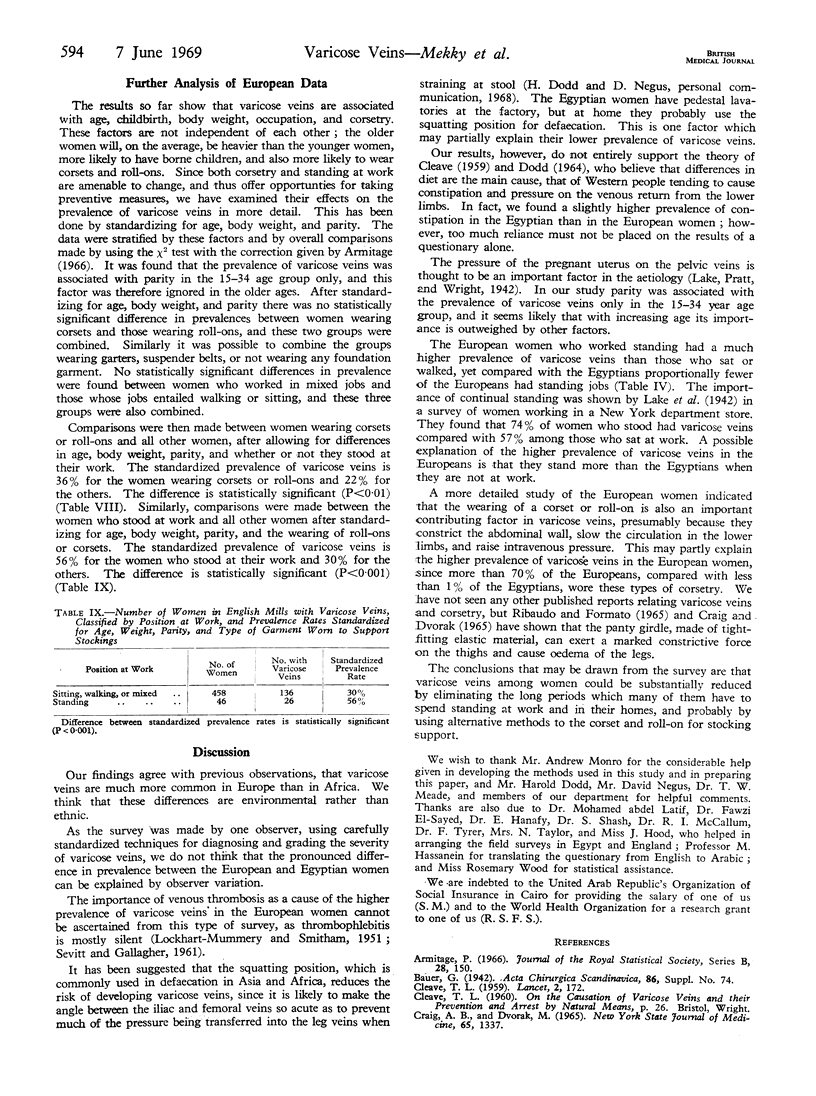
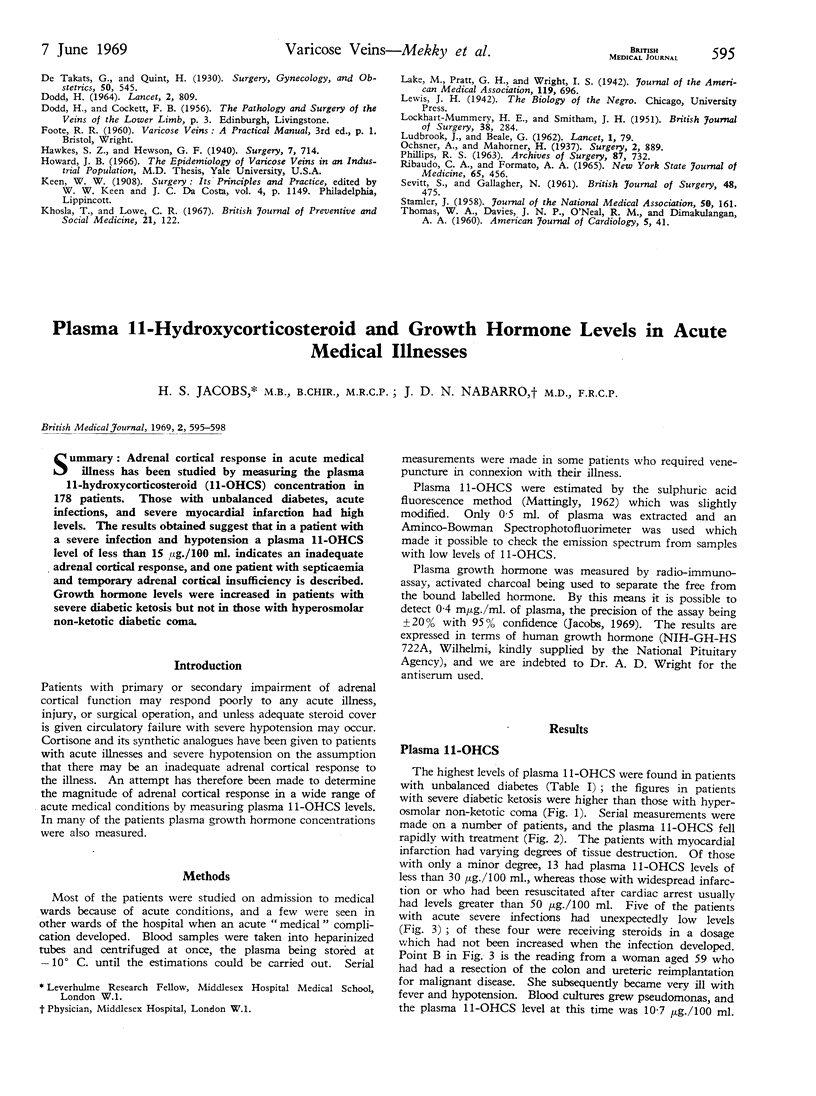
Images in this article
Selected References
These references are in PubMed. This may not be the complete list of references from this article.
- CLEAVE T. L. Varicose veins, nature's error or man's? Some implications of the Darwinian theory. Lancet. 1959 Aug 22;2(7095):172–175. doi: 10.1016/s0140-6736(59)90577-x. [DOI] [PubMed] [Google Scholar]
- CRAIG A. B., Jr, DVORAK M. CONSTRICTIVE FORCES OF PANTY GIRDLE ON THIGH. N Y State J Med. 1965 Jan 1;65:1337–1338. [PubMed] [Google Scholar]
- DODD H. THE CAUSE, PREVENTION, AND ARREST OF VARICOSE VEINS. Lancet. 1964 Oct 10;2(7363):809–811. doi: 10.1016/s0140-6736(64)90579-3. [DOI] [PubMed] [Google Scholar]
- Khosla T., Lowe C. R. Indices of obesity derived from body weight and height. Br J Prev Soc Med. 1967 Jul;21(3):122–128. doi: 10.1136/jech.21.3.122. [DOI] [PMC free article] [PubMed] [Google Scholar]
- LOCKHART-MUMMERY H. E., SMITHAM J. H. Varicose ulcer; a study of the deep veins with special reference to retrograde venography. Br J Surg. 1951 Jan;38(151):284–295. doi: 10.1002/bjs.18003815105. [DOI] [PubMed] [Google Scholar]
- LUDBROOK J., BEALE G. Femoral venous valves in relation to varicose veins. Lancet. 1962 Jan 13;1(7220):79–81. doi: 10.1016/s0140-6736(62)91724-5. [DOI] [PubMed] [Google Scholar]
- PHILLIPS R. S. PROGNOSIS IN DEEP VENOUS THROMBOSIS. Arch Surg. 1963 Nov;87:732–742. doi: 10.1001/archsurg.1963.01310170018005. [DOI] [PubMed] [Google Scholar]
- RIBAUDO C. A., FORMATO A. A. PANTY GIRDLE SYNDROME. N Y State J Med. 1965 Feb 1;65:456–457. [PubMed] [Google Scholar]
- STAMLER J. Epidemiology as an investigative method for the study of human atherosclerosis. J Natl Med Assoc. 1958 May;50(3):161–200. [PMC free article] [PubMed] [Google Scholar]
- THOMAS W. A., DAVIES J. N., O'NEAL R. M., DIMAKULANGAN A. A. Incidence of myocardial infarction correlated with venous and pulmonary thrombosis and embolism. A geographic study based on autopsies in Uganda. East Africa and St. Louis, U.S.A. Am J Cardiol. 1960 Jan;5:41–47. doi: 10.1016/0002-9149(60)90007-2. [DOI] [PubMed] [Google Scholar]



